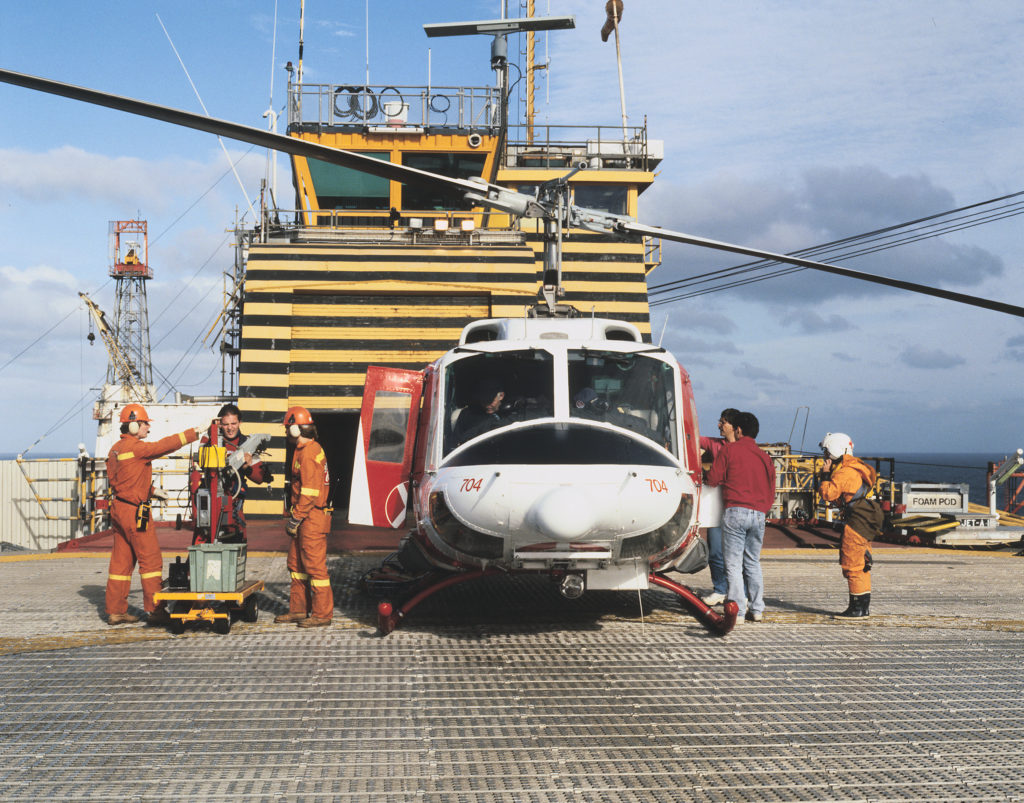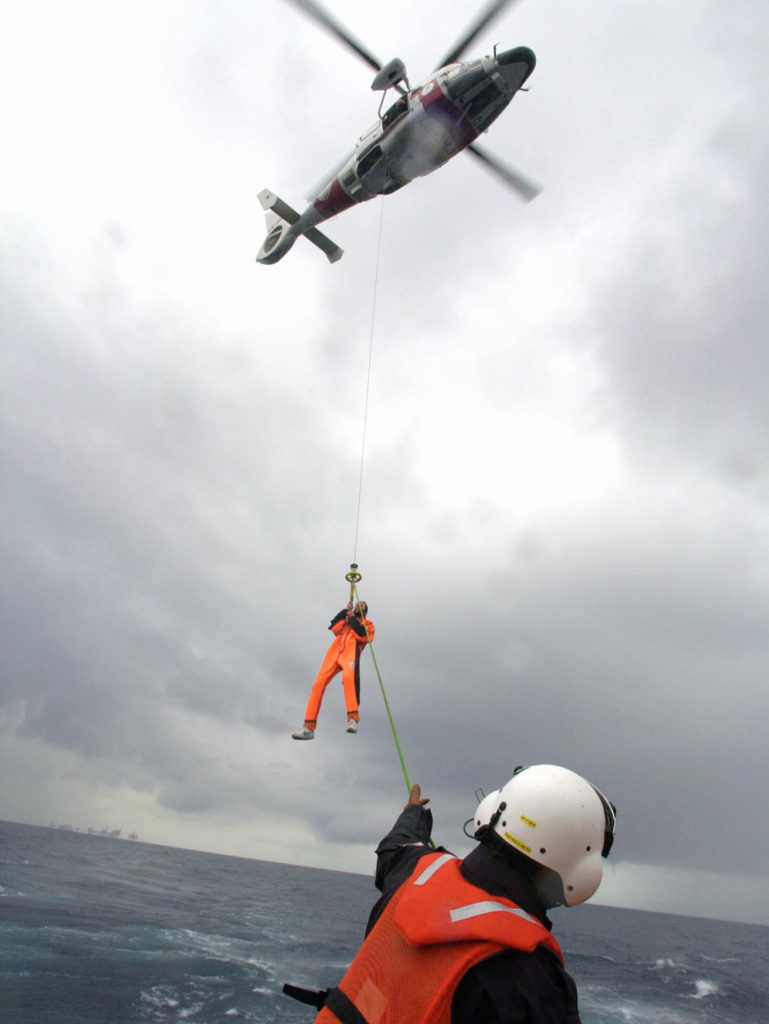SAR team honoured for saving life

 historie, 2012, sar hedret for å redde liv,
historie, 2012, sar hedret for å redde liv,This machine was the first to arrive, just 25 minutes after help was requested by the UK Coastguard, and evacuated 109 people to nearby installations. A number of British helicopters also helped to remove all 238 people from the platform. Much praise and attention was heaped on the SAR team from Ekofisk by the UK authorities for its rapid response and good commitment during this response.
The whole SAR team was later rewarded with the lifesaving class in the Spirit prize – ConocoPhillips’ highest honour. The citation praised its long service in the North Sea.
This award was the company’s way of honouring individuals or groups who had exemplified its core values and high standards in their work and contribution to society. “Spirit” stood for safety, personnel, integrity, responsibility, innovation and teamwork.
Emergency preparedness on Ekofisk
The SAR service on the field is part of the emergency preparedness system for the southern part of Norway’s North Sea sector, and is constantly engaged in rescue and ambulance assignments.
 historie, 2012, sar hedret for å redde liv,
historie, 2012, sar hedret for å redde liv,Emergency preparedness on Ekofisk began early, and both a Bell 212 and an old Bell 47 were stationed on the field in 1995. They were primarily used to shuttle between the installations, but also had ambulance and rescue roles.[REMOVE]Fotnote: Pioner, no 1, “SAR-tjenesten skaper trygghet”, 2013.The SAR service was put on a more formalised footing in 1981, and a new Bell 212 arrived as a second machine for rescue personnel. Both could reach land in good weather if necessary.
This helicopter fleet was replaced in 2016 with a Sikorsky S-92-A. Bell helicopters had then been flying people to and from offshore installations for 11 years.[REMOVE]Fotnote: Dalløkken, Per Erlien, “Her er en ny helikoptertype på kriseoppdrag i Norge”, Teknisk Ukeblad, 22 June 2016.
Collaboration
Norway’s continental shelf was split into several emergency response areas in 2001. Resources – primarily SAR helicopters, standby ships and maritime monitoring services – were shared within each of these.
They are the southern fields (including the Greater Ekofisk Area – GEA), Sleipner-Utsira, Troll-Oseberg, Tampen, Halten-Nordland and Barents-Goliat.[REMOVE]Fotnote: Petroleum Safety Authority Norway, Evaluering av samarbeid om beredskap (områdeberedskap), main report st-13755-2.
Some oil installations, such as the Ekofisk Complex, have SAR helicopters permanently stationed as part of the companies’ own emergency preparedness measures. While their primary job is to provide rescue services on and around their home installation, they are also available to the joint rescue coordination centre (JRCC) when assistance is needed. Their offshore location puts them close to important fishing banks and shipping routes.
In addition to providing ambulance flights from platforms, the helicopters can pick up people who have fallen in the sea and fetch sick or injured personnel from vessels.
The operators of fixed installations in the various areas share the cost of running the relevant SAR service, which is purchased from civilian helicopter companies.
SAR service for southern fields
The southern fields cover the GEA (including Eldfisk, Embla and Tor), all operated by ConocoPhillips. In addition come Aker BP-operated Ula, Tambar, Valhall and Hod, while Repsol-operated Gyda is due to shut down in 2019.
 SAR – Hedret for å redde liv, historie, 2011,
SAR – Hedret for å redde liv, historie, 2011,SAR activities there are organised through an executive committee where all the operators of permanent facilities are represented, with ConocoPhillips in the chair.
In this area, the SAR helicopters are stationed at the Ekofisk Complex. Operator Bristow has two Sikorsky S-92s positioned on Ekofisk 2/4 L. Each of these machines has a crew of two pilots, one technician/winch operator, one rescue person and a nurse anaesthetist who is a specialist in acute medical treatment. Two fully crewed helicopters mean the service is robust.
Virtually all call-outs are ambulance flights, either acute cases or normal transport of sick people to shore. But some SAR, maritime assistance and JRCC callout jobs are done every year.
GEA ready for another 40 yearsIntelligent well on 2/4 B